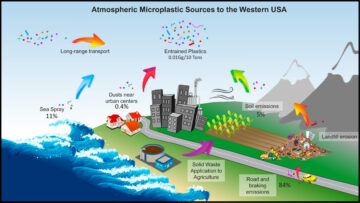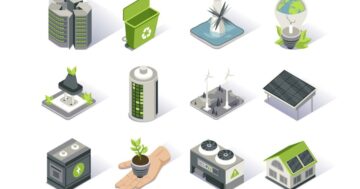Sometimes the future becomes visible in the present. During our time at the COP26 climate summit, we discovered that the number of fossil fuel industry delegates outnumbered those from any single country. Activists saw this, no doubt accurately, as a concerted attempt to slow down — or stall — timely action to address the climate emergency. But maybe we should view the news in a different light.
If you think of the past as a different country, as L.P. Hartley famously put it, where they do things differently, those 500 fossil folk could be seen as dinosaurs protesting the rise of a transformed energy landscape. A transformation that even they increasingly see as pretty much inevitable, just a matter of time.
Maybe they can take some small comfort from the fact that a few surviving dinosaurs adapted and became the birds that populate our skies and telephone wires. There will be gas, oil and even coal enterprises in the future, but not as we know them today. Perhaps we should picture the CEOs of oil giants such as ExxonMobil, BP, Shell and Saudi Aramco sitting on telephone wires and TV aerials in different parts of tomorrow’s world?
For some sense of how this is likely to shape up, explore RethinkX’s startling recent energy report. The forecast: Solar, wind and battery technologies will outflank and outrun fossil fuel and nuclear technologies within an astonishingly short period of time. COP26 saw big fossil fuel producers (notably Saudi Arabi and Russia) and users (notably China) working hard to stem the tide, but as Britain’s King Canute famously discovered, it’s not much use telling the tide to turn. Your throne is first inundated, then washed away.
None of this is new, of course. Our energy economy has been massively disrupted in the past. Indeed, as I rode the train north to Glasgow ahead of the event, I was reading Jeremy Paxman’s new book on the critical role coal played in Britain’s rise to global power. Among an almost infinite number of other things, it fueled both the Finnieston Crane — which loomed over the COP26 Blue Zone, where the negotiations took place — and the steam locomotives that the crane once lowered into waiting ships for export around the world.

![]()
![]()
![]()
![]()
The coal industry’s toll was horrific — and is still being paid. Paxman’s “Black Gold” opens with the terrible story of the Hartley mining disaster of 1862. This single catastrophe created 103 widows and left 257 children and 47 dependent adults with no means of support. Ages of the dead ranged from 71 down to 10 — indeed, a single family lost seven children and teenagers.
Clearly, the Industrial Revolution was no paradise for young people, but perhaps they had it easy in contrast to the future prospects of young people now alive as the consequences of all the coal, oil and gas we have burned come home to roost.
In fact, it was striking how many voices at COP26 were busily heralding the end of coal as a fuel. New agreements included a pledge signed by 25 countries, including the United States and Canada, to stop public financing of overseas fossil fuel projects by the end of 2022. The U.K. also unveiled its Global Coal to Clean Power Transition, featuring new commitments from 23 countries, including Poland, South Korea and Indonesia, to phase out coal power.
“Today, I think we can say that the end of coal is in sight,” said Alok Sharma, president of COP26, but where were the big coal-burners, including China? Burning more coal than ever in the midst of the latest energy crisis is the uncomfortable truth.
As we move deeper into the Anthropocene epoch, a growing range of incumbent industries will be disrupted, dethroned. We will experience the stranding of immense numbers of previously valuable assets, hurting ill-prepared investment portfolios and economies alike. In preparation for COP27, it might be an interesting party game to consider what these industries’ versions of Glasgow’s towering — and highly symbolic — Finnieston Crane might be.
But COP26 also heralded the emergence of very different technologies, business models and mindsets. Starting with the third of these, when I moderated a Blue Zone session on the “Next Frontier,” featuring the CEOs of Acciona, DSM, IKEA and Unilever, the spotlight was on the growing need to look well beyond net zero commitments and targets to system change. The World Business Council for Sustainable Development, one of the session’s sponsors, stresses that we need to zero in on reinvention, resilience and regeneration.

![]()
![]()
![]()
![]()
![]()
![]()
![]()
But if I took away any one message for those responsible for evolving our economic future it isn’t that we must now forget incumbent industries and focus all our resources on the industries of the future. Rather, we need to tackle our past, present and future challenges simultaneously.
At one point I ran into Nigel Topping, the U.K.’s high-level climate champion — unusually sporting a tie. He underscored the need for radical action on incumbent, high footprint industries. “Emissions from crude steel and cement and concrete production all need to decline by 4 percent per year by 2030 to follow the IEA’s scenario for reaching net-zero emissions by 2050,” he said. Meanwhile, “emissions from chemicals need to decline by 10 percent between 2020 and 2030.”
But we must also keep our eyes on emerging technologies. A report released during the summit called on governments to recognize the potential for artificial intelligence to accelerate the transition to net zero emissions and to support the technology. No surprise, then, that this report was developed by the Centre for AI & Climate and Climate Change AI for the Global Partnership on AI, made up of 18 countries and the European Union. It makes 48 recommendations for governments — and spotlights examples where AI is already helping address our climate challenges.

![]()
![]()
![]()
![]()
In the same spirit of radical innovation, I was awed by the Rolls-Royce Spirit of Innovation, all-electric aircraft. My father flew Spitfires in earnest in WWII, so I found the design strikingly familiar. With much made in the media of the private jets the wealthy and the powerful used to fly into Glasgow, maybe this signals how growing numbers will travel to future COPs? Or maybe tomorrow’s COPs will go increasingly virtual as they try to embrace an ever-expanding spectrum of stakeholders, including younger generations?
I hope not, because there is virtue in face-to-face contact that is hard to reproduce online. Meanwhile, the COP world is certainly changing. Kicking off the Next Frontier session, I asked the audience and panelists to raise their hands if this was their first COP. Around three-quarters of the audience put their hands up. It was my first, too.
Although there were logistical nightmares, compounded by security and pandemic concerns, COP26 broke new ground — pulling in much greater numbers of people. They included what must have been the biggest number of business delegates. Happily, my sense is that the 500 or so fossil people were outnumbered by at least an order of magnitude by people who want to see our economics and economies embracing Green Swan trajectories, becoming exponentially fitter for transformed market realities.
Source: https://www.greenbiz.com/article/will-big-oil-ceos-be-tomorrows-birds-telephone-wires









